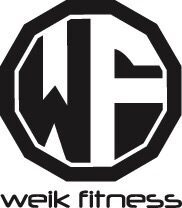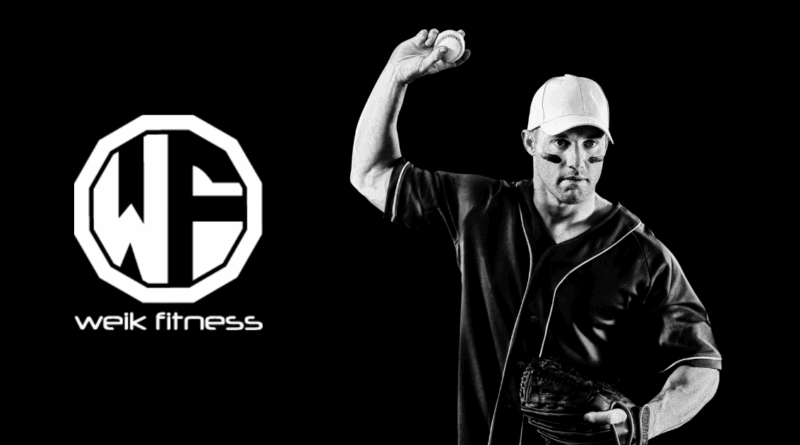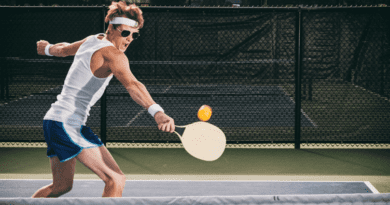How To Increase Baseball Throwing Speed and Pitch Velocity
Want a faster fastball and higher pitch velocity? You don’t need to have the same throwing speed as pros in the major league in order to make a difference on the field. You can build real mph with smarter training and better pitching mechanics to increase baseball throwing speed and pitch velocity.
Track progress with a radar gun, stay patient, and stack small wins.
As a youth baseball coach, certified strength coach, and sports nutritionist, I’ve worked with kids from the youth baseball and little league levels all the way up to players in Major League Baseball.
Sure, the ability to throw a fastball at high speeds is cool for young athletes, but simply increasing your average speed is enough to improve player development. You don’t need to be Nolan Ryan throwing a 100 mph pitch down the pike to make travel ball or the varsity team.
The key with all of this is gradually improving how fast pitchers can throw by improving biomechanics and their pitching motion (while avoiding arm injuries). A collegiate or high school athlete can play the best baseball of their lives with a little work.
This guide is going to look at different age groups, what the averages are for different pitches, and how to increase their baseball throwing speed, as well as pitch velocity.
Disclaimer: This article is for informational purposes only and is not meant to treat or diagnose any condition. It is recommended that you speak with your doctor before starting any exercise program, changing your daily nutrition, or adding any supplements to your regimen.
Table of contents
- Understanding Baseball Throwing Speed and Pitch Velocity
- Factors That Influence Baseball Throwing Speed and Pitch Velocity
- What Are the Average Baseball Throwing Speeds by Level?
- Common Pitch Types and Average Pitching Speed
- Training Techniques to Improve Baseball Throwing Speed
- How can weighted ball training increase average pitching velocity?
- What are the benefits of long toss programs?
- How do resistance band exercises help with baseball throwing speed?
- Why are rotational core workouts important for pitchers (like high school pitchers)?
- How does lower body strength training contribute to faster throws?
- Injury Prevention While Increasing Pitch Velocity
- Using Technology to Track Progress
- Avoiding Common Mistakes
- Building a Holistic Approach to Throwing
- Improve Baseball Throwing Speed and Pitch Velocity for Better Gameplay
- Baseball Throwing Speed and Pitch Velocity FAQs
- Baseball Throwing Speed and Pitch Velocity References
Key Takeaways
- Clean pitching mechanics and strong legs, core, and arm drive higher pitch speed. The MLB average fastball now sits near 94.2 mph.
- Resistance training often boosts throwing speed between 3.7% and 26%. Six-week weighted ball plans raise velocity for many players.
- Youth pitchers, ages 9 to 12, usually throw 40 to 60 mph. High school arms reach 80 to 90 mph, and college pitchers can touch 95 mph.
- Elite pros, like Aroldis Chapman and Emmanuel Clase, pass 100 mph. They pair powerful lower bodies with precise technique.
- Radar guns, video systems like Rapsodo PITCHING 2.0, and wearables track gains in real time. Better data supports safer progress.

Understanding Baseball Throwing Speed and Pitch Velocity
Pitch speed and throwing velocity sound alike but are not the same. Speed shows how fast the ball travels. Velocity adds direction to that speed, which is what hitters face.
What is the difference between baseball throwing speed and velocity?
Baseball throwing speed is the number on the radar gun in miles per hour. Velocity is speed plus direction, so it shows where the ball goes. Speed is a scalar measurement. Velocity is a vector, which includes direction.
Speed draws attention from coaches and scouts, velocity wins at-bats.
Coaches evaluate velocity, command, and results. Training and mechanics shape both. Nolan Ryan’s 100 mph fastball had elite speed, and it played because he controlled velocity into the zone.
Why are throwing mechanics important for velocity?
Proper mechanics let the body transfer energy from the ground to the ball. Power starts in the legs, moves through the core, then out the arm at release. That smooth transfer raises pitch speed without arm-only effort.
Good form can increase velocity more than muscle growth alone. Research shows resistance band exercises boost speed by improving movement patterns. Big leaguers like Aroldis Chapman show the model. Strong lower bodies plus clean timing create triple-digit readings, while also lowering injury risk, like ulnar collateral ligament tears.
Factors That Influence Baseball Throwing Speed and Pitch Velocity
Throwing harder is about details. Build arm speed, master body positions, and follow a smart strength plan. Each choice adds up.
How do physical maturity and body composition affect baseball throwing speed?
More muscle means more force behind each pitch. As players mature, whole-body strength grows, which supports higher velocity. In high school pitchers, larger dominant arm and leg muscles often match higher speeds.
The segmental muscle volume directly links to throwing speed, with a strong positive relationship (r = 0.412, P < 0.01). Age alone does not raise velocity if strength does not climb. Focus on legs, glutes, and the throwing arm with squats, deadlifts, and baseball-specific lifts.
More usable muscle, more energy transfer on the mound.
Players who train these groups see throws climb past 80 mph. Some reach 90 mph sooner than expected with steady work.
What are proper throwing mechanics for increasing speed?
Use the whole body. Start with a balanced leg lift and ride momentum toward home. Keep the back hip loaded, then drive off the rubber with triple extension, which means pushing through the ankle, knee, and hip together.
Build hip to shoulder separation. Keep the hips open as the torso rotates, then release with a firm front side and a strong chest move toward the plate. Finish with smooth internal rotation of the shoulder. Mobility in the mid-back and hips lets you rotate fully without strain, which protects velocity as speeds rise.
These steps improve energy transfer. They help hard throwers chase peak velocities across ages, from high school to the big leagues. Watch pitchers like Emmanuel Clase and Roger Clemens for timing and posture examples.
How does strength and conditioning improve throwing velocity?
Strength and conditioning builds force, control, and repeatable speed. Use squats, lunges, plyometrics, core training, Olympic lifts, and band work. Strong legs drive the delivery, a stable core links the lower body to the arm, and trained fast-twitch muscle supports quick arm action.
A review of 12 studies showed velocity improved in 8 of them with structured resistance work. Gains often include better accuracy, too. Strong tissue also shields the elbow and shoulder under game stress. Consistent strength work, matched with sound mechanics, can move a pitcher from the mid-70s to near 90 mph over time.
Why is mental focus important for consistent baseball throwing speed?
Mental focus keeps mechanics steady. Distraction changes the arm slot and release point, which leads to slower pitches and missed spots. Focus helps maintain a solid 70 mph or higher across outings.
Pitchers with strong concentration throw harder and locate better across a season. Use feedback tools to spot the link between mindset, velocity, and command. Greg Maddux made a career with focus and precision.
What Are the Average Baseball Throwing Speeds by Level?
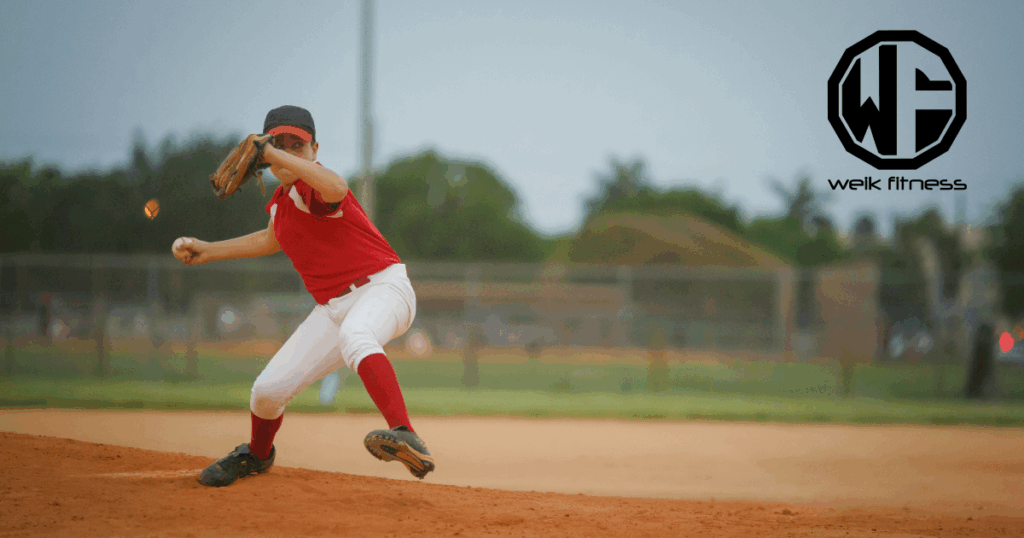
Speeds vary across levels. Use this simple velocity chart to gauge progress, then set your next goal.
What Throwing Speeds Are Typical in Youth Baseball (Ages 8–12)?
At ages 9 to 10, fastballs average 40 to 50 mph. Ages 11 to 12 usually reach 50 to 60 mph. A few outliers may touch near 70 mph.
At this stage, coaches stress arm care and mechanics. That approach reduces injury and supports long-term growth. As strength rises and form improves, speed follows. A radar gun makes small gains clear and motivating.
What Is the Average Throwing Speed in High School Baseball (Ages 13–18)?
Freshmen, ages 14 to 15, often sit between 65 and 75 mph. Sophomores reach 70 to 80 mph. Juniors usually land near 75 to 85 mph.
Seniors throw 80 to 90 mph. Top arms can touch 95 mph. Coaches watch for steady readings above age norms, which signal good training and mechanics. Consistent speed also changes how batters plan each at-bat.
How Fast Do College Baseball Players Typically Throw in mph?
In Division I, most fastballs sit between 85 and 95 mph. Some reach beyond 95 mph. Division II typically ranges from 80 to 90 mph, and Division III from 75 to 85 mph.
Changeups usually come in the mid to high 70s, roughly fifteen mph under the fastball. Curveballs often read 75 to 85 mph. Sliders can run from about 80 to low 90s for top arms. Training, fitness, and pitching mechanics decide which end of the range you reach.
What Are Professional Baseball (MLB) Throwing Speeds Like?
In professional baseball, four-seam fastballs often read 90 to 100 mph. The MLB average fastball is about 94.2 mph, and many pitchers now sit above 95 mph. Some exceed 100 mph, which makes for tough at-bats.
Off-speed pitches add timing games. Sliders usually range 80 to 90 mph. Curveballs drop to roughly 70 to 80 mph. Changeups come in slower than the heater to disrupt swings. Mariano Rivera owned a mid-90s cutter that moved late, a great example of speed plus deception.
Common Pitch Types and Average Pitching Speed
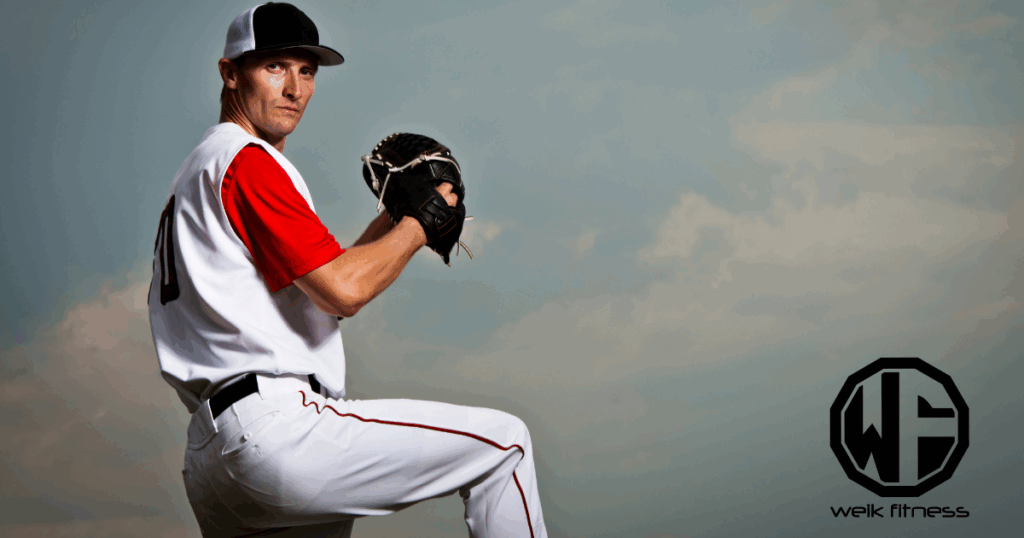
Each pitch has a typical speed window. Knowing the gaps helps you build a complete plan on the mound.
What is the typical speed of a four-seam fastball?
The four-seam fastball is the game’s fastest pitch. In the majors, many sit 93 to 95 mph. Some throw over 95 mph, like relief pitcher Kenley Jansen. Most big-league heaters stay at least 90 to 92 mph.
In college, a strong four-seam fastball usually sits 85 to 88 mph. High school standouts may reach the high 70s or low 80s. Hitting 90 mph is rare in high school, and scouts notice it. Backspin on all four seams creates that rising fastball feel that misses barrels.
How fast is a two-seam fastball (sinker)?
The two-seam fastball, often called a sinker, usually sits 90 to 92 mph in MLB. Greg Maddux worked in the low 90s with great movement and command. Brandon Webb’s sinker lived down in the zone and won awards.
This pitch moves arm-side and drops, helped by a seam-shifted wake. It reads a tick slower than a four-seam fastball on a radar gun, but the late run makes it dangerous. Mastering control over two seams raises weak contact and ground balls.
What speeds do cutters usually reach?
Cutters are usually 2 to 8 mph slower than the four-seam fastball. In MLB, most cutters live in the upper 80s or low to mid 90s. Mariano Rivera and Kenley Jansen worked in that window and kept hitters off balance.
Emmanuel Clase throws a cutter near 100 mph, with a peak at 102.8 mph. Average MLB cutter spin sits around 2400 RPM, which is often higher than many four-seam fastballs. Clean mechanics and a repeatable release point keep the break tight without losing speed.
How fast should a change-up be thrown?
A good change-up is 10 to 15 mph slower than your fastball. If the heater is 90 mph, aim for 75 to 80 mph. College pitchers often throw changeups in the mid to high 70s.
Use the same arm speed as the fastball so the pitch looks identical out of the hand. That speed gap, plus spin and grip, keeps hitters off time. Aim for 6 to 12 mph separation on average, which works from youth baseball through the majors.
Training Techniques to Improve Baseball Throwing Speed
Smart training builds the base for speed. Core stability, strength training, long toss, and plyometrics create a complete plan that scales by age and workload.
How can weighted ball training increase average pitching velocity?
Weighted ball training uses lighter and heavier balls than the standard 5-ounce baseball. Programs often span six weeks with both underload and overload throws. Many players see velocity gains when paired with solid mechanics.
Lighter balls train arm speed. Heavier balls build force through the motion. Track daily readings with a radar gun and adjust volume when needed. Keep the sessions short and follow proven progressions to reduce elbow stress and protect the shoulder.
What are the benefits of long toss programs?
Long toss builds a stronger, healthier arm. It increases shoulder strength, improves range of motion, and boosts endurance. As distance grows, intent rises, which supports higher game speed.
Many pros use long toss to prepare for outings or during rehab. With proper mechanics, the plan can lower injury risk. Customize the distances and the number of throws to match goals, season timing, and recovery needs.
How do resistance band exercises help with baseball throwing speed?
Resistance bands target small stabilizers in the shoulder and forearm. Strong stabilizers protect joints and support higher velocity. A structured band plan improved baseball throwing speed in eight of twelve studies, ranging from 3.7% to 26%.
Use bands to warm up and cool down. Train the patterns used in sidearm throws, splitters, and other grips. Consistent work sharpens mechanics, boosts endurance, and can reduce common overuse injuries.
Why are rotational core workouts important for pitchers (like high school pitchers)?
Rotational core training builds the torque that drives the baseball pitch. Think about a medicine ball throw. You load, rotate, and release powerfully, which mirrors your delivery.
Strong hips and torso improve the kinetic chain, which is how energy moves from the ground to the hand. A stable core also reduces stress on the shoulder and elbow at full speed. Add exercises like cable chops and Russian twists twice a week. Many pitchers feel more powerful within a month, and the radar gun shows it.
How does lower body strength training contribute to faster throws?
Fast throws start in the legs and hips. Squats, deadlifts, and plyometrics build force into the ground. Olympic-style pulls and power cleans teach quick, explosive movement that matches pitching rhythm.
Six weeks of steady strength work often produces clear gains. Even band-only programs can lift velocity by several percentage points. Avoid ego lifting and focus on form, range of motion, and recovery. Strong legs, strong results.
Injury Prevention While Increasing Pitch Velocity
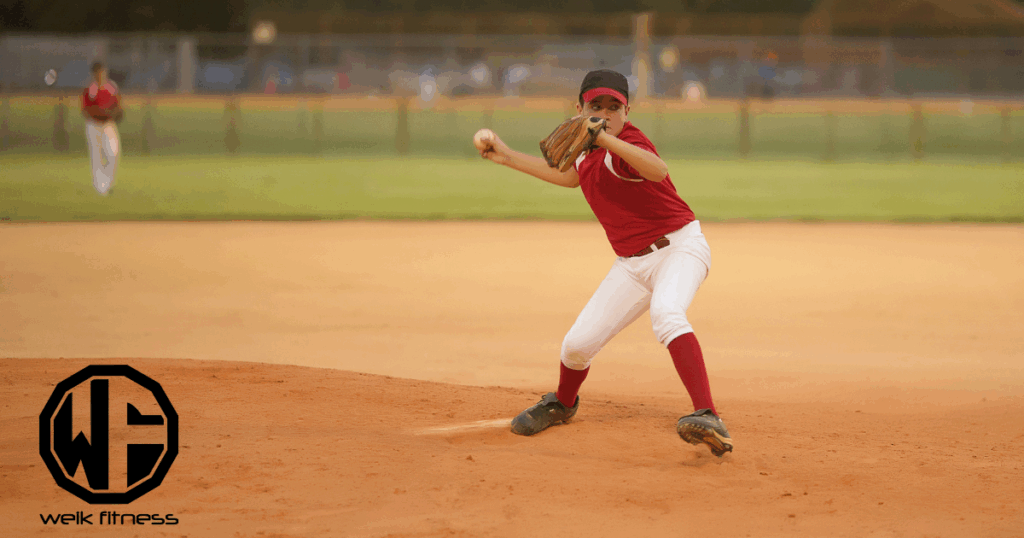
Your arm is your career engine, so protect it. Use warm-ups, arm care, and mobility to support each jump in speed. If pain lasts longer than 48 hours, see a qualified medical professional.
What are effective warm-up and cool-down routines?
Start with dynamic moves, like arm circles, leg swings, and easy jogging. Add light medicine ball throws to wake up the core and shoulders. Begin with easy tosses, then build intensity in steps.
After throwing, cool down with slow, gentle stretches for major muscle groups. Lower the heart rate and relax tight areas. A short routine reduces soreness and prepares you for the next session.
How do arm care programs prevent injuries when you throw hard?
Arm care focuses on flexibility, strength, joint mobility, and body control. Train shoulder rotation, hip internal rotation, and shoulder blade stability with bands and light weights. This approach protects the elbow and shoulder during high-speed throws.
Following an arm care plan cut medial elbow injuries by 49.2% in one study. Massage, active recovery, and soft tissue work speed up repair. Manage pitch counts across all ages. That habit lowers risk and supports steady development.
Why is maintaining flexibility and mobility crucial to improve pitching?
Better mobility unlocks cleaner mechanics and more velocity. Shoulder mobility helps both speed and command. Mobile hips allow a longer stride and stronger hip to shoulder separation.
Mobility training improves blood flow and shortens recovery time. Use bands, controlled range drills, and light implements to grow motion safely. Smooth motion turns leg power into ball speed more efficiently.
Using Technology to Track Progress
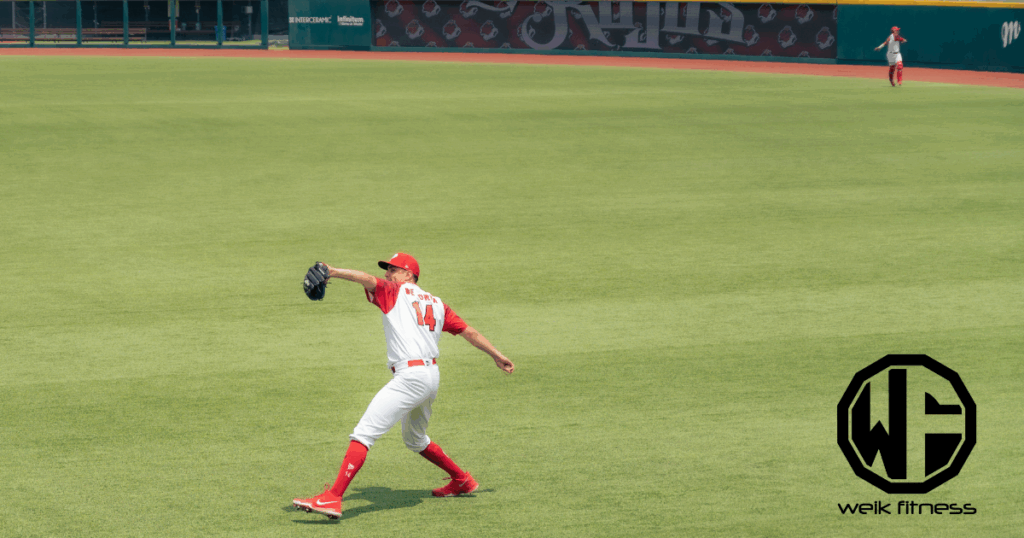
Data makes training sharper. Radar guns, video tools, and wearable sensors show what changed and what to fix next.
How do radar guns measure baseball throwing speed?
Radar guns send waves that bounce off the ball, then calculate speed from the return time. Early devices measured closer to the plate. Newer systems, like Statcast, capture speed at release, which reads higher.
Accuracy depends on placement, angle, spin, drag, gravity, and brand calibration. Stand behind or directly in line with the throw to reduce cosine error. Coaches also use radar guns to test power throws in training, which helps connect strength work to pitch velocity.
What can video analysis tools reveal about pitching mechanics on the mound?
Systems like Rapsodo PITCHING 2.0 provide instant video with pitch data. You see spin rate, speed, release height, and movement. Slow-motion replay exposes small changes in arm angle or wrist action that you might miss live.
Frame-by-frame review shows grip, release point, and follow-through. Tunneling analysis checks how similar pitches look before they break apart late. Real-time feedback lets you adjust on the spot, which speeds up learning and raises command.
How do wearable performance trackers assist in training?
Wearables, like smart sleeves and motion sensors, track arm path, body angles, and throw intensity. Seeing the numbers helps you correct mechanics during practice.
They also watch workload and stress. That data guides recovery, so you can train hard while staying healthy. Many pro teams rely on these tools to personalize plans for each pitcher’s needs.
Avoiding Common Mistakes
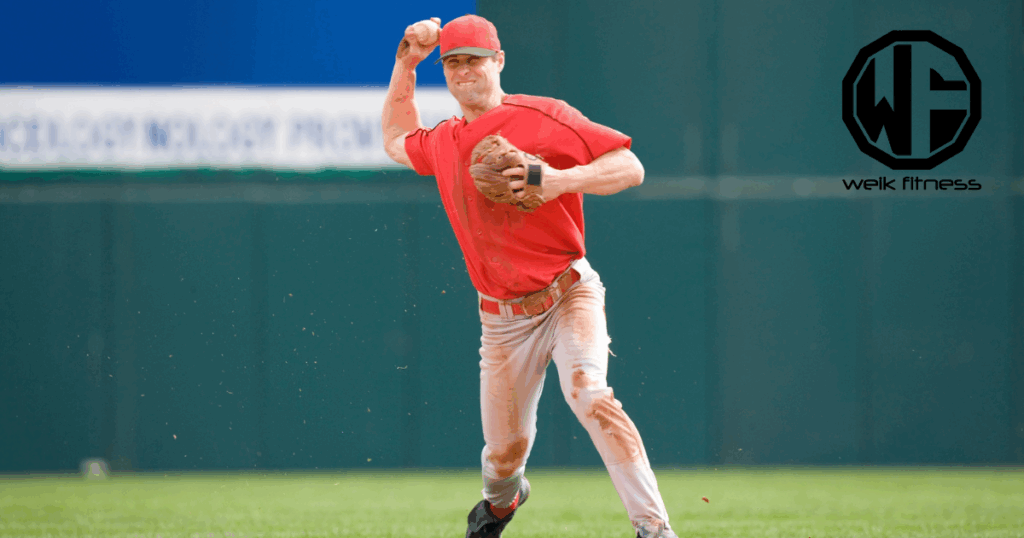
Small mistakes steal velocity and add risk. Fix them early with coaching, video checks, and patient progress.
What happens when you overthrow without proper mechanics?
Overthrowing without form puts extra strain on the shoulder and elbow (causing some common baseball injuries). Flexing the elbow too much or landing with an open front foot raises stress. Studies show open landings increase shoulder force compared to closed landings.
Chasing speed without clean moves leads to overuse injuries. Many young pitchers pay for it later in the season. Use video to spot errors and correct them before pushing velocity again.
Why is recovery and rest essential for velocity improvement?
Recovery turns hard work into speed gains. Muscles need time to rebuild and adapt. Aim for seven to nine hours of quality sleep.
Fuel with balanced meals and hydrate well. Light movement on off days boosts blood flow and reduces soreness. Fitness trackers can signal when you need more rest or can push harder.
I have another article I recommend checking out that covers how to improve baseball arm recovery. This will help both fielders and pitchers with their arm care.
What are the risks of focusing only on speed (such as 70 mph and 90 mph?
Focusing only on mph raises injury risk and hurts command. Mechanics break down, which leads to missed spots and more walks. More rest days follow, and development slows.
Chasing radar readings can also ignore pitch counts and recovery. That habit increases fatigue and poor control. Safer progress comes from form, strength, and speed, together.
Building a Holistic Approach to Throwing
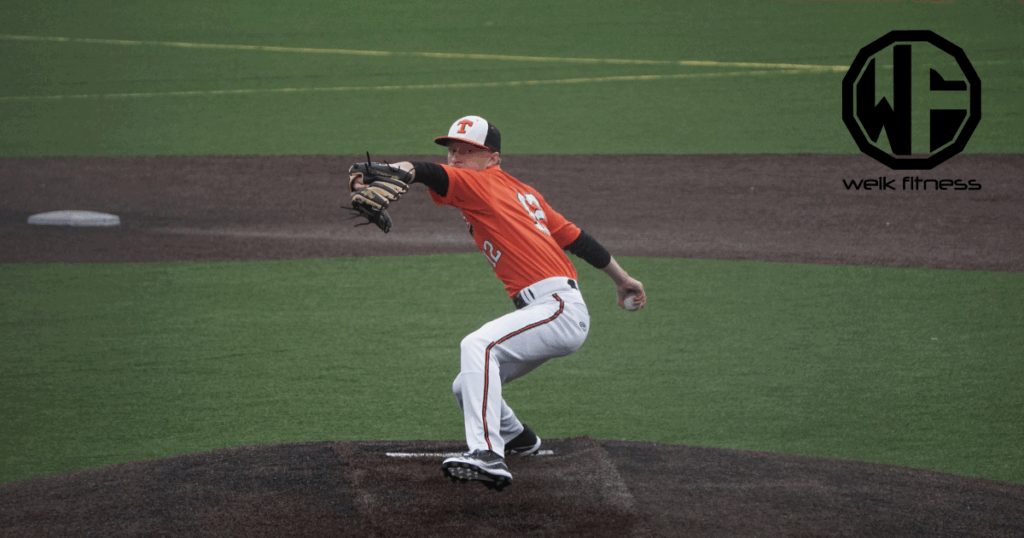
The best results come from a complete plan. Blend skill work, strength and conditioning, feedback, and mental training into each week.
How can working with a pitching coach improve velocity?
A pitching coach spots small issues fast, then drills them out. Fixes in balance, timing, and grip can raise speed and control together. Towel and wall drills sharpen movement patterns.
Use video and a radar gun to show progress each session. Coaches also build plans that protect the arm while building power. Confidence grows as velocity and command improve.
What role does mental resilience play in pitching?
Mental resilience helps you handle pressure and bounce back quickly. It keeps attention on the next pitch instead of the last mistake. Confidence supports mechanics under stress and holds velocity late in outings.
Pros use mental skills training, like breathing work and guided apps, to stay composed. That habit produces steadier performance week after week.
How important is consistency in practice for throwing speed?
Consistent practice builds repeatable mechanics and speed. Scouts value steady readings and a stable release point. A regular schedule creates muscle memory and reduces injury risk.
In many cases, four weeks of steady work can add 3 to 5 mph. Set simple targets, log sessions, and keep technique the priority. Small, daily gains stack up fast.
Improve Baseball Throwing Speed and Pitch Velocity for Better Gameplay
Raising baseball throwing speed and pitch velocity takes smart effort, steady rest, and clear feedback. Use pitching mechanics that transfer energy cleanly. Track growth with a radar gun and video, and add weighted balls, bands, and long toss with care. Build strong legs and a powerful core to drive each fastball.
RELATED: Wilson A2000 — The Best Infield Wilson Baseball Glove?
Work with a coach, protect your arm, and stay focused. This guide is educational and not medical advice. If pain persists, see a licensed clinician. Stick with the plan, and each pitch brings you closer to your next goal on the mound.
Baseball Throwing Speed and Pitch Velocity FAQs
Improving your throwing speed starts with building strong arm muscles and a stable core. Focus on exercises like medicine ball throws, resistance band routines, and long toss drills. Consistent practice helps you develop better mechanics, which leads to faster pitches.
Proper pitching form is crucial for maximizing velocity. Work on your stride length, hip rotation, and follow-through motion during each throw. Small adjustments in grip or release point often lead to noticeable gains in speed over time.
Yes, plyometric training such as box jumps or explosive push-ups builds power throughout the body. Combine these with shoulder strengthening moves like external rotations using light weights for balanced muscle growth and injury prevention.
Absolutely; increased flexibility allows for greater range of motion during the windup and delivery phases of pitching. Stretching routines targeting shoulders, hips, and back support smoother movements so you can generate more force behind every pitch—imagine reaching new personal bests as your body works efficiently together!
Baseball Throwing Speed and Pitch Velocity References
- https://pmc.ncbi.nlm.nih.gov/articles/PMC11550301/
- https://pmc.ncbi.nlm.nih.gov/articles/PMC3873239/
- https://pitchmechanics101.com/the-9-factors-that-strongly-influence-pitching-velocity/
- https://www.sciencedirect.com/science/article/pii/S2405844023100053
- https://pmc.ncbi.nlm.nih.gov/articles/PMC3778685/
- https://www.concordsports.com/baseball-pitching-speed-by-age/
- https://www.topvelocity.net/2023/06/09/average-pitching-velocity-by-pitch-age/
- https://www.platecrate.com/blogs/baseball-101/how-fast-is-the-average-pitch-in-baseball
- https://www.perfectgame.org/articles/view.aspx?article=1192
- https://premierpitching.com/blogs/premier-pitching-chronicles/the-science-of-the-2-seam-fastball-grip-mechanics-ball-flight-analytics-and-pitch-design
- https://pmc.ncbi.nlm.nih.gov/articles/PMC8016426/
- https://pmc.ncbi.nlm.nih.gov/articles/PMC3445126/
- https://www.mlb.com/glossary/pitch-types/changeup
- https://pmc.ncbi.nlm.nih.gov/articles/PMC7930148/
- https://pmc.ncbi.nlm.nih.gov/articles/PMC8137765/
- https://pmc.ncbi.nlm.nih.gov/articles/PMC10731065/
- https://brucebolt.us/blogs/news/pitcher-workouts-to-increase-velocity
- https://pmc.ncbi.nlm.nih.gov/articles/PMC7103592/
- https://pmc.ncbi.nlm.nih.gov/articles/PMC7990975/
- https://blog.armcare.com/four-ways-arm-care-increases-your-throwing-velocity/
- https://stickmobility.com/blogs/stick-mobility/the-benefits-of-mobility-training-for-baseball-athletes
- https://sabr.org/journal/article/radar-gun-love/
- https://rapsodo.com/blogs/baseball/enhancing-your-game-with-a-pitch-tracker
- https://www.mdpi.com/2076-3417/13/18/10399
- https://hittersbaseballacademy.com/baseball-recovery-how-rest-fuels-performance/
- https://gorout.com/baseball-pitching-drills/
- https://journals.lww.com/nsca-jscr/fulltext/2016/07000/Ball_Speed_and_Release_Consistency_Predict.1.aspx?generateEpub=Article%7Cnsca-jscr:2016:07000:00001%7C%7C


*Disclosure: This article may contain affiliate links or ads, which means we earn a small commission at no extra cost to you if you make a purchase through these links. These commissions help support the operation and maintenance of our website, allowing us to continue producing free valuable content. Your support is genuinely appreciated, whether you choose to use our links or not. Thank you for being a part of our community and enjoying our content.
PLEASE CONSIDER SHARING THIS ON YOUR SOCIAL MEDIA TO HELP OTHERS LEARN MORE ABOUT THIS TOPIC.
